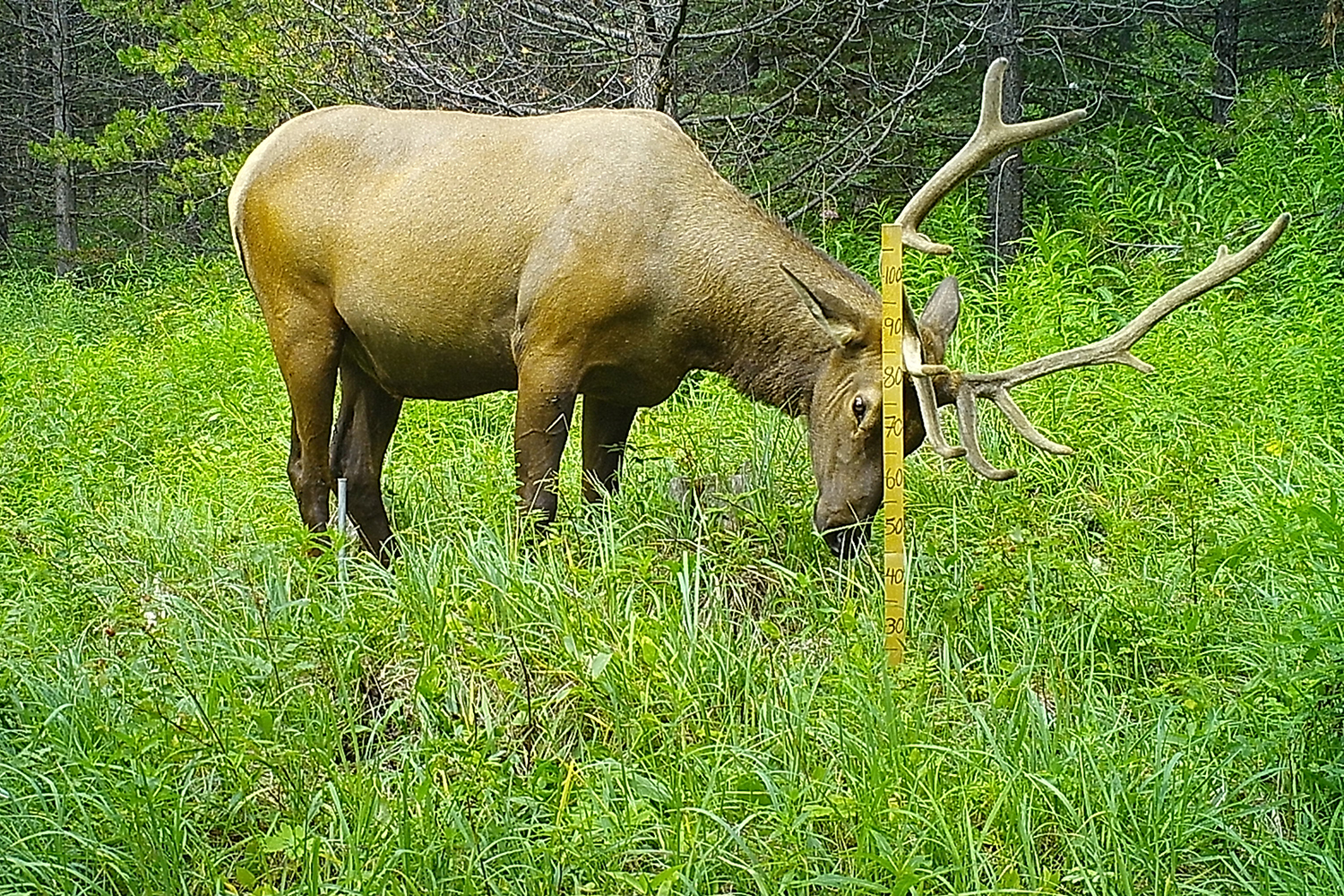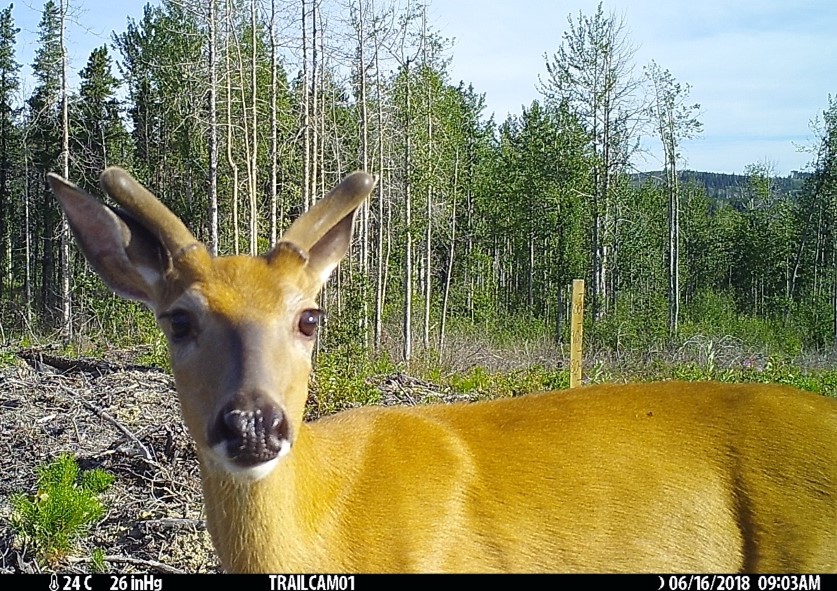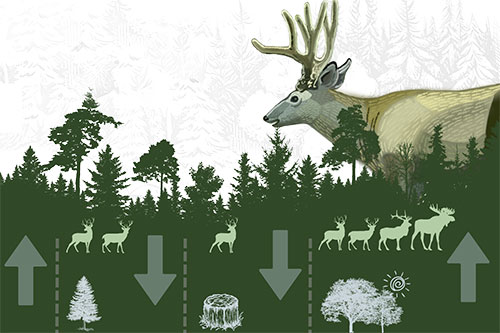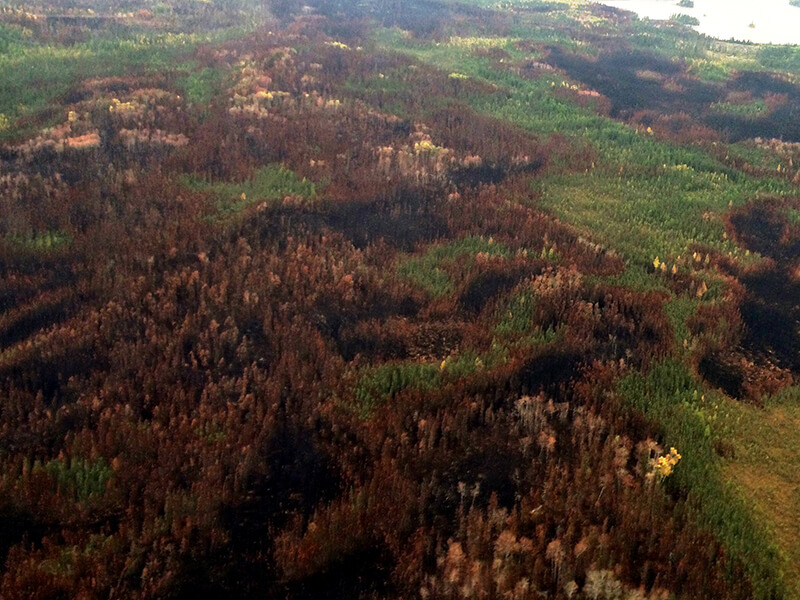
In November, Tracy McKay presented about a Caribou Program project looking for cutblock characteristics that are less attractive to moose, deer, and elk. Using silviculture techniques that result in these kinds of cutblocks in caribou ranges could help reduce predation risk for caribou.
Watch a recording of the webinar here
More info about the Caribou Monitoring Unit’s webinar series here.
Abstract
The links between habitat disturbance, primary prey, shared predators, and decreasing caribou populations are well established, and long-term solutions for caribou recovery will require management to reduce primary prey within caribou ranges. Young forest stands provide habitat for deer, moose and elk, and identifying attributes of forest harvest blocks associated with habitat use, occupancy, and co-occurrence of primary prey and predators could inform forest management practices to decrease spatial overlap between these species and caribou. We used camera and vegetation data collected in harvest blocks during 2018 – 2020 in four west-central Alberta caribou ranges (Little Smoky, A La Peche, Redrock Prairie Creek, and Narraway) to assess: 1) occurrence and co-occurrence of primary prey and predators in relation to habitat and harvest block characteristics, and 2) use of harvest blocks by primary prey in relation to block characteristics and silviculture practices.
We did not detect caribou at any cameras in harvest blocks. Elk and moose occupancy increased with abundance of specific forage species in the block and deciduous forest in the surrounding area. Mule deer occupancy increased with forest age in the surrounding area, and white-tailed deer occupancy decreased with increasing harvest blocks in the surrounding area. Black bear occupancy was influenced by vegetation within blocks, while occupancy of grizzly bears and wolves was influenced by surrounding anthropogenic disturbance. The direct influence of specific forage species on occupancy suggests that altering the amount of preferred forage within blocks could directly impact wildlife use of harvest blocks. Our results also indicate that the surrounding habitat influences wildlife use of harvest blocks at the site level. We also found black bear occupancy was higher when white-tailed deer were present, and grizzly bear occupancy was higher when mule deer were present. These results suggest that deer may be important food sources for bears in our study area, with potential implications for the spatial overlap of bears and caribou within caribou ranges.
In our analysis of the use of harvest blocks in relation to block characteristics and silviculture practices, we found that elk, moose, and white-tailed deer used blocks with higher abundance of specific forage species, and moose, mule deer, and white-tailed deer used blocks with lower densities of pine planted. Most forage species are considered as competitors for planted tree species, and these results suggest that silviculture methods used to control specific forage species and establish high densities of pine could meet forestry goals and reduce primary prey use of harvest blocks.
Our results indicate it is important to include both the characteristics within and surrounding harvest blocks when considering predator and prey distribution. In addition, the relationships we observed in multi-species models illustrate that higher local occupancies of prey species could directly increase spatial overlap of bears and caribou, resulting in increased caribou predation risk. Finally, our results suggest that specific forestry practices could directly influence primary prey use of harvest blocks.









